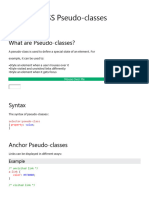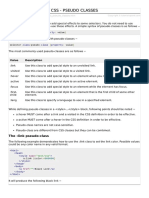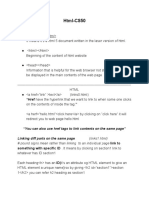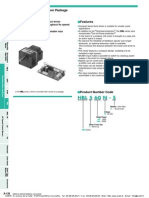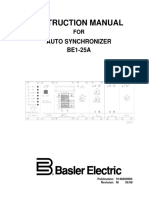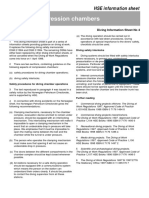0% found this document useful (0 votes)
15 views17 pagesCascading Style Sheet Lecture 5
This document provides an overview of pseudo-classes and pseudo-elements in CSS, detailing their syntax and usage. Pseudo-classes allow styling based on an element's state, such as hover or focus, while pseudo-elements enable styling specific parts of an element, like the first letter or line. Examples are given for various pseudo-classes and pseudo-elements, including anchor pseudo-classes and the ::before and ::after pseudo-elements.
Uploaded by
caretronics77Copyright
© © All Rights Reserved
We take content rights seriously. If you suspect this is your content, claim it here.
Available Formats
Download as PDF, TXT or read online on Scribd
0% found this document useful (0 votes)
15 views17 pagesCascading Style Sheet Lecture 5
This document provides an overview of pseudo-classes and pseudo-elements in CSS, detailing their syntax and usage. Pseudo-classes allow styling based on an element's state, such as hover or focus, while pseudo-elements enable styling specific parts of an element, like the first letter or line. Examples are given for various pseudo-classes and pseudo-elements, including anchor pseudo-classes and the ::before and ::after pseudo-elements.
Uploaded by
caretronics77Copyright
© © All Rights Reserved
We take content rights seriously. If you suspect this is your content, claim it here.
Available Formats
Download as PDF, TXT or read online on Scribd
/ 17













